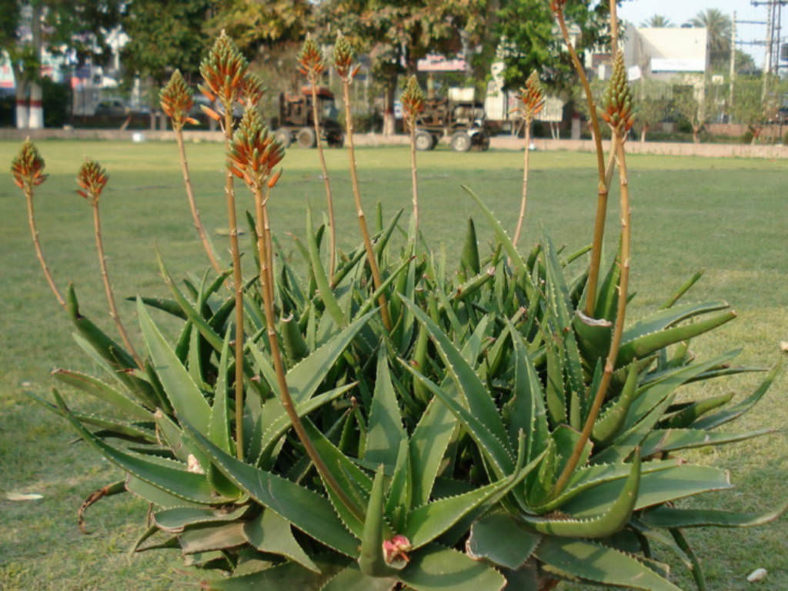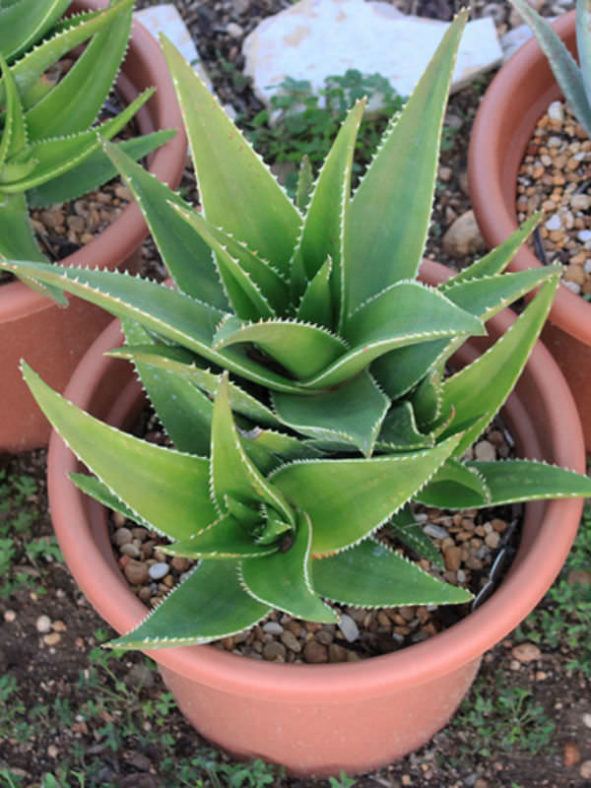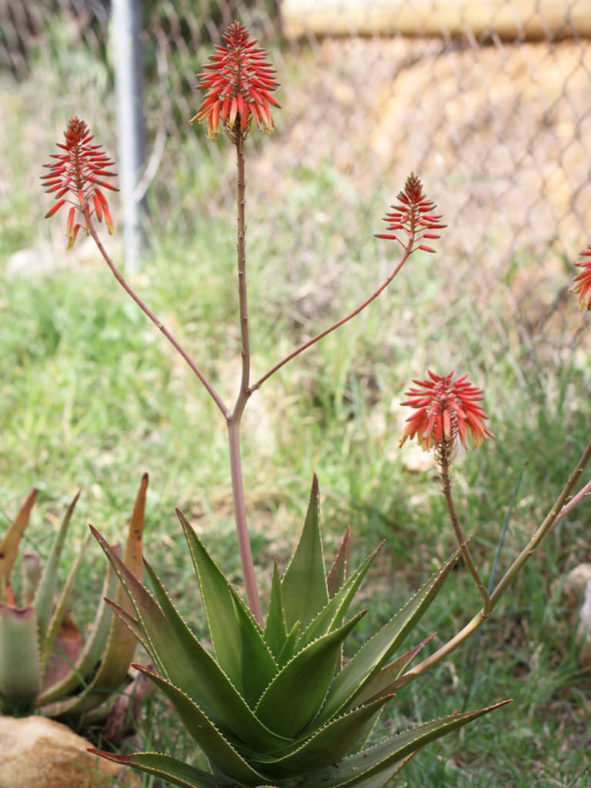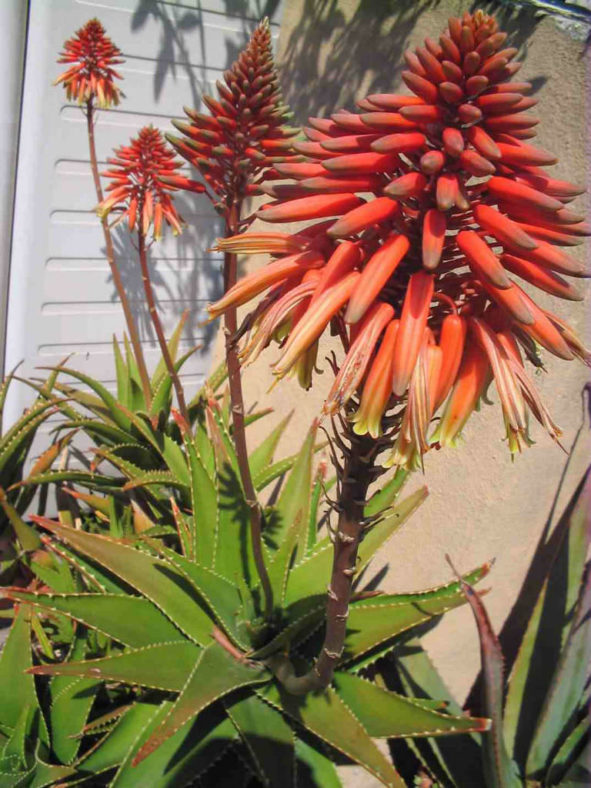Scientific Name
Aloe × delaetii
Scientific Classification
Family: Asphodelaceae
Subfamily: Asphodeloideae
Genus: Aloe
Etymology
The specific epithet "delaetii" (pronounced "del-ay-tee-eye") honors Frans (Frantz) de Laet (1866–1928), a Belgian succulent plant expert and horticulturist in Kontich.
Origin
Aloe × delaetii is a hybrid that results from a cross between Aloiampelos ciliaris (formerly known as Aloe ciliaris) and Aloe succotrina. It is widespread in Europe.
Description
Aloe × delaetii is a fast-growing succulent with erect, woody stems and dark green, triangular leaves with margins lined with tiny, white teeth. It can reach a height of 4 feet (1.2 m) and offsets prolifically, forming a dense clump as it matures. The leaves are fleshy, not very thick, concave, and can grow up to 12 inches (30 cm) long. In shade, the stems can become creeping, growing thinner and longer, with smaller leaves.
The tubular flowers are orange to reddish-orange with paler tips and appear in dense conical clusters on tall, often branched stalks throughout the year.

Hardiness
USDA hardiness zones 8b to 11b: from 15°F (-9.4°C) to 50°F (10°C).
How to Grow and Care
Aloe is a very forgiving plant, and a well-grown plant can be quite beautiful. However, as with all succulents, Aloe must never be allowed to sit in stagnant water, and the plant should be carefully monitored to watch for signs of overwatering.
These succulents are not particularly fast-growing and will only rarely need repotting. Repot Aloes that are tipping over their pots or have ceased growing in spring. A well-drained potting mix is essential. Use cacti or succulent mix. When repotting a larger plant, it is possible to divide the root ball carefully. Some varieties of Aloe will send off offsets that can be potted independently.
Aloe plants need intense, bright light. They can withstand full summer sun once acclimated. In the winter, provide bright light. These plants prefer warmer temperatures of 70 to 80 °F (21 to 27 °C) but will survive down to 40 °F (4.5 °C). Feed with a fertilizer for cacti and other succulents in spring and summer only.
Learn more at How to Grow and Care for Aloe.
Links
- Back to genus Aloe
- Succupedia: Browse succulents by Scientific Name, Common Name, Genus, Family, USDA Hardiness Zone, Origin, or cacti by Genus
Photo Gallery
Click on a photo to see a larger version.


